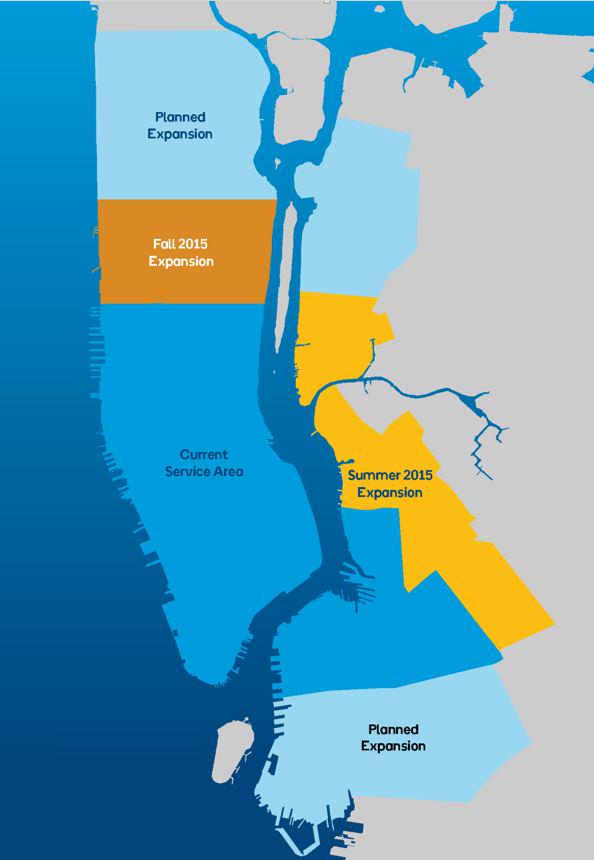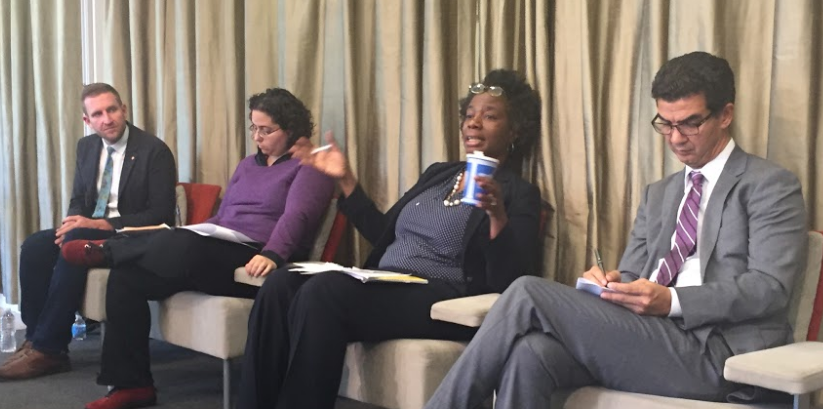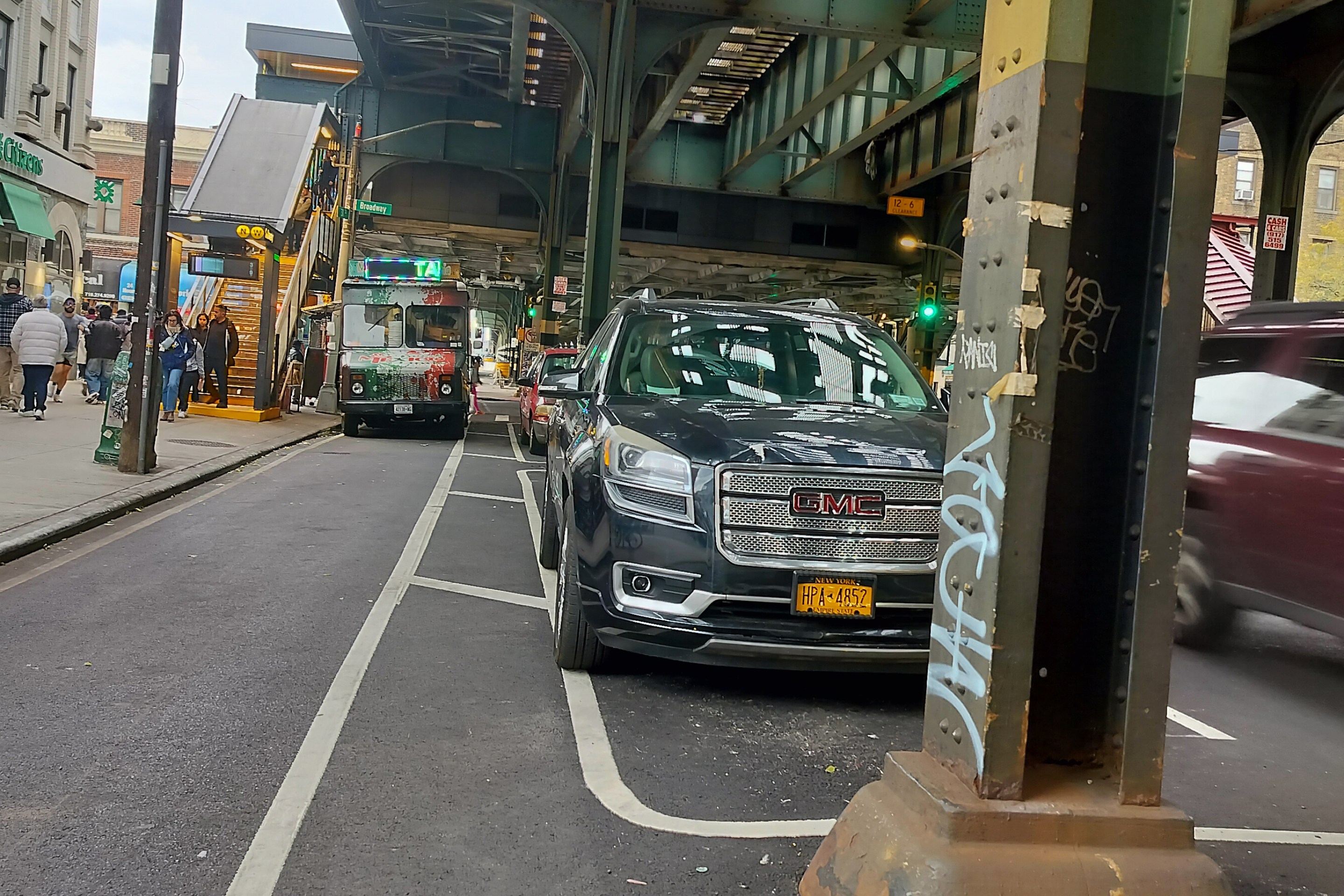After a rough start, Citi Bike is on a roll. Recent service improvements and expansions have turned around enrollment numbers and led to countless record-setting days for NYC bike-share ridership. But while the service has become a viable and successful new way to get around, bike-share has yet to reach most of the city's low income neighborhoods and communities of color.
That can change, according to participants at an NYU Rudin Center panel yesterday on bike-share equity, but only if residents of those communities see bike-share as intended for them. Doing that means providing low-cost enrollment fees, enabling local residents to take charge of efforts to promote bike-share specifically and cycling in general, and expanding the Citi Bike network to the city's more peripheral and transit-poor neighborhoods.
Station density is the hallmark of an effective bike-sharing system, which means the network should be contiguous with stations spaced close together. But for Citi Bike that also means its limited resources were first deployed in the most affluent parts of the city, and for the most part the network has yet to reach poorer neighborhoods.
"The planning of the network starts in the Central Business District and emanates out from there," said Pratt Center Policy Director Elena Conte. "The other thing that starts in the Central Business District of Manhattan and emanates out from there... is escalating real estate prices."
Conte said Citi Bike's association with gentrification -- along with the way the service is branded, marketed, and priced -- turns lower-income New Yorkers off the service. "I think the perception of Citi Bike in a lot of communities is that there's a 'tell, don't show' about how it's good for you," she said. "You look at the bikes, they have a corporate logo. You look at who's on the bikes, they don't necessarily look like you."
In Bedford-Stuyvesant, one of the few predominantly black neighborhoods with bike-share stations until this year's expansion into Harlem, the Bed-Stuy Restoration Corporation has worked to promote the service for NYCHA residents, women, and people of color by organizing community rides, for instance.
"Citi Bike was not really embraced in the community [at first], and we thought 'How can we get involved, as a leader in the neighborhood, to really change the narrative?'" said Bed-Stuy Restoration Executive Vice President Tracey Capers.

There's no "silver bullet," Capers said. "In low-income communities, we're concerned about how do I put food on the table, how do I pay for my rent. With this new election, we're worried about our safety, we're worried about a whole number of things, and Citi Bike is not necessarily top of mind. So what we're really trying to do is try to figure out how to integrate [bike-share] as a tool for addressing their most pressing needs."
Their efforts have brought results. In the last year, according to Capers, Bed-Stuy's Citi Bike enrollment has increased 56 percent and the number of trips in and out of the neighborhood has quadrupled.
One obvious obstacle for low-income New Yorkers is the cost of membership, which currently stands at $155 per year. While Citi Bike offers $60 annual and $5 monthly enrollment fees to NYCHA residents and credit union members, and doctors have even taken to prescribing bike-share memberships to patients, Capers said there are too few affordable membership options. "NYCHA is not the proxy for poor," she said.
Ultimately, public funding could both subsidize memberships and accelerate the growth of the bike-share network. Transportation Alternatives Executive Director Paul Steely White and City Council Transportation Chair Ydanis Rodriguez, who also appeared on yesterday's panel, have both called for city bike-share funding. Specifically, Rodriguez said that he believes the city can help most with capital expenses and reducing membership costs.
When Citi Bike launched in 2013, Mayor Michael Bloomberg emphasized the fact that it relied on nearly no taxpayer money. With the service becoming more reliable and cost-effective thanks to last year's hardware and software upgrades, DOT has said it is open to discussing funding options after the current expansion phase rounds up in Astoria and Central Brooklyn next year. But Rodriguez isn't waiting to start the conversation: The Monday after Thanksgiving, his committee will hear from DOT, Citi Bike operator Motivate, and others on the "present and future of Citi Bike."
Rodriguez said he believes it's "the government's responsibility" to ensure bike-share reaches more communities. "[There is] no doubt that the city has made important progress when it comes to creating better conditions for New Yorkers to ride a bike," Rodriguez said. "We have to continue to close the gap."






